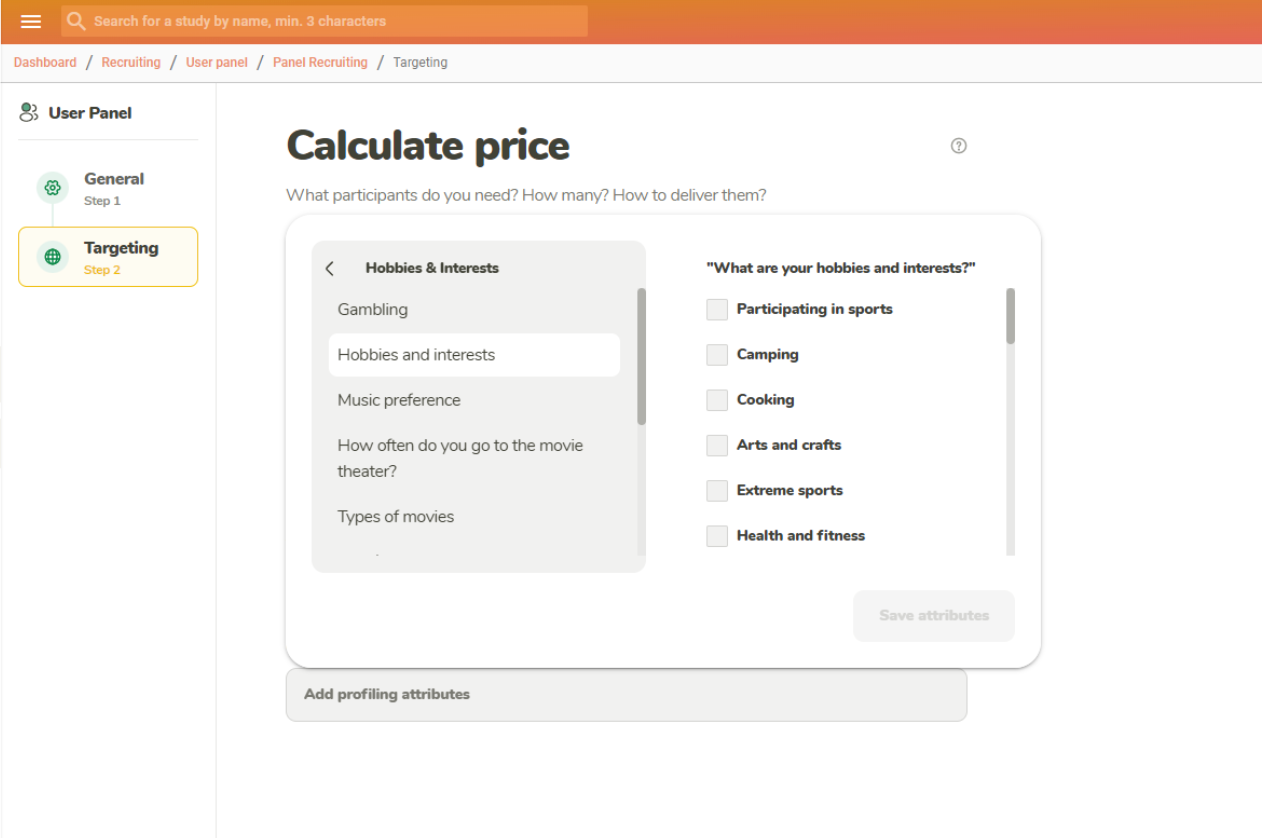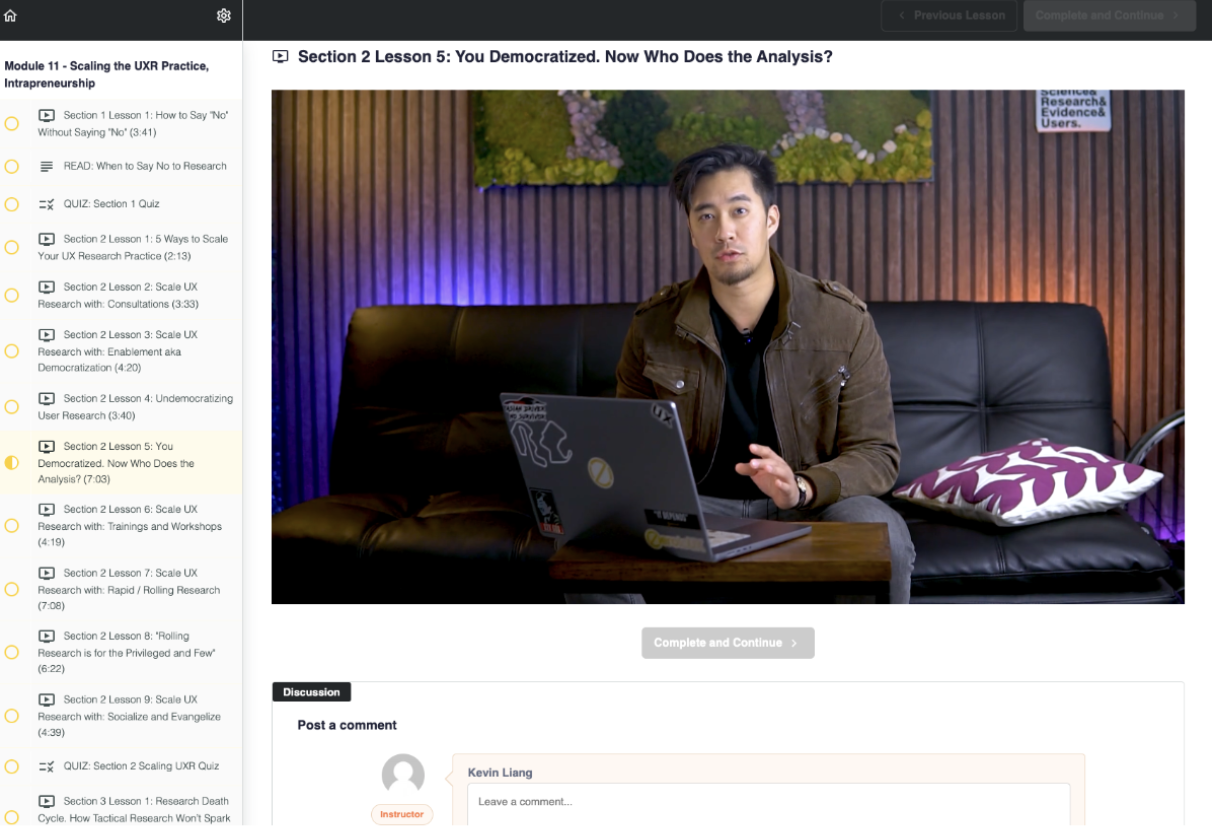Imagine you’re building a bridge, but without a blueprint. That’s what designing a product without a UX research strategy feels like. A UX research strategy is your detailed plan for understanding your users, that ensures that every decision you make is rooted in real user data.
Below we’ll dive deep into the essence of a good UX research strategy, it’s components, benefits, and explain how to write one, as well aswhat critical mistakes to avoid.
What is a UX research strategy?
A UX research strategy is a plan that outlines how you’ll conduct research to understand your users’ needs, behaviors, and attitudes. It covers the methods, tools, and processes you’ll use to gather insights about your target audience. This strategy helps guide design decisions, ensuring your final product meets users’ expectations and needs.
UX research strategy vs. UX strategy

While UX research strategy and UX strategy are closely related, they serve different purposes within the design process.
A UX research strategy focuses specifically on the methods and processes used to gather insights about users. This includes planning and conducting user interviews, surveys, usability testing, and other research studies, recruiting participants, and analyzing insights. The primary goal is to organize the process of collecting user data, ensuring that every team member is aligned and adheres to the plan.
On the other hand, a UX strategy is a broader plan that encompasses the entire user experience design process. It includes the vision, goals, and roadmap for creating a cohesive and engaging user experience for the product. This strategy integrates insights from UX research but also involves other elements such as information architecture, interaction design, content strategy, and visual design.
Additionally, a UX strategy outlines how the user experience aligns with business objectives, ensuring a seamless and enjoyable interaction with the product. In essence, while the UX research strategy provides user research data, the UX strategy ensures all aspects of the user experience work together to achieve the desired business outcomes.
Why is a UX research strategy a must?
Why have 2 different strategies for one project, you may ask?
Well, a UX research strategy is essential because it ensures that the fundamental part of your UX process – research – is well-planned and and allows you to swiftly gather user insights that will help to make data-backed design decisions later.
Without a solid UX research strategy, you risk creating a product based on your assumptions, and not actual user needs, leading to poor user satisfaction and engagement, not to mention the wasted resources.
A well-prepared research strategy, on the other hand, helps to identify pain points, preferences, and behaviors of your users, which are critical for designing intuitive and effective user experiences.
As David Travis, states in his book “Think Like a UX Researcher: How to Observe Users, Influence Design, and Shape Business Strategy”:
Components of a UX research strategy
1. Target user
Identifying your target user is the foundation of any UX research strategy. Knowing who your users are helps tailor the research to gather relevant and actionable insights. Define the demographics, psychographics, and behavioral patterns of people who will be the target audience of your product.
If yo’re working on a redesign or adding a new feature or design element to an already existing product, you should already have your target user profile in mind.
Creating a UX persona will help you organize all the data you have about your target user in one or multiple profiles. Learn how to create a UX persona in this video:
2. UX research goal
Clear UX research goals are the next crucial component of a good UX research strategy. These goals will help to ensure that your research efforts are focused and aligned with both user needs and business objectives at all times, helping you stay focused on your main priorities.
We recommend to break down your list fo UX research goals into long-term, middle-term, and short-term:
- Long-term goals focus on the overall vision and major milestones for the user experience.
- Middle-term goals involve specific projects or phases within the larger strategy.
- Short-term goals address immediate needs and quick wins that can provide fast feedback and iterative improvements.
A good UX research goal is specific, measurable, and time-bound. It should clearly define the aspect of the user experience being targeted, include quantifiable metrics to track progress, and set a clear deadline.
For example, “Increase the task completion rate for the checkout process by 20% within the next six months” is a well-defined goal because it specifies the focus area (checkout process), includes a measurable target (20% increase), and has a set timeframe (six months).
3. UX research questions
Next step is to define the questions you’re looking to answer with your research. Start by identifying the specific problems or areas of uncertainty you want to address. These questions should be directly tied to your product’s goals and user needs.
For example, instead of a broad question like “How can we improve our app?” focus on something specific, such as “What problems do users face during the sign-up process?”
The number of research questions to include in your strategy depends on the complexity and goals of your project, as well as the timelines. Typically, having 3 to 5 well-defined research questions is ideal.
4. Research timeframe
Specifying a research timeframe is crucial to make sure you effectively manage your timings and adhere to deadlines, not letting your research take unnecessarily long. A well-defined timeframe helps keep the research on track and ensures timely delivery of insights.
The timeframe includes setting deadlines for different stages of the research, from initial planning to data collection and analysis. Consider the complexity of your research, the resources available, and the urgency of the need.
Set a timeframe that is realistic, ensuring there is enough time to collect data, analyze results, and implement changes without rushing the process.
5. UX research tools & methods
When it comes to UX research tools, choosing one that supports all your research goals is an ideal solution. That’s why all-in-one research tools like UXtweak is a great option, that gives you access to all the features you need, without having to pay for multiple different platforms.
UXtweak gives you the most flexibility, allowing to mix UX research methods and collect both qualitative and quantitative data from your users.
For example, a researcher might want to collect a screen recording of the participant completing a task, but also answering some predetermined survey questions. This way, the they will have more in-depth qualitative insights into the user’s behavior.
Try it yourself with UXtweak! ⬇️
6. Participant recruitment strategy
Most UX researchers would agree that recruiting the right users is often one of the hardest part of the whole research process. Take the time to think through the recruiting channels you’re going to use in order to find the needed number of participants that match your target user profile.
If you don’t want to waste your time on the recruiting struggles and are willing to delegate this challenge to the professionals – we recommend recruiting from a User Panel. This is the easiest way to get targeted participants for your study in the tightest deadlines.
At UXtweak, we also offer a quality guarantee, study audit, and a recruiting expert assigned to you, to help with recruiting even the most niche audiences.

➡️ Learn more about UXtweak User Panel or contact our Panel experts to discuss your recruiting needs.
7. Data analysis methods
Define how you’re planning to analyze the collected data. The right data analysis approach helps convert raw data into actionable insights. The methods may vary, depending on the type of research and insights that you gather. Thiese may include qualitative analysis techniques for interpreting user feedback and quantitative methods for analyzing metrics and trends.
When working with an online UX research tool, you can also delegate part of the analysis to the tool you’re working with. In UXtweak, for example, we present quantitative insights in the form of easy-to-read graphs and tables, which you can also export and share with the team.
8. UX research success metrics
Lastly, your UX research strategy should include the success metrics for your research project. These metrics can include user satisfaction scores, task completion rates, and the number of usability issues identified. Clear success metrics provide a benchmark for assessing the impact of your UX research efforts.
Who benefits from a UX research strategy?

A well-crafted UX research strategy is a vital component for various team members involved in the design and development process. It provides clear direction, facilitates collaboration, and ensures that all team members are aligned on their goals.
Here’s a short breakdown of the different roles that work with a UX research strategy:
- Lead UX researchers: Lead UX researchers oversee the entire UX research process, ensuring that the strategy aligns with the broader business and design goals. A clear UX research strategy helps them coordinate efforts, set priorities, and measure the impact of the research, effectively guiding their team.
- UX researchers: UX researchers are on the front lines of the research process, conducting interviews, usability tests, and other studies. A UXR strategy serves as a roadmap to them, detailing what needs to be done, when, and how.
- Data analysts: Data analysts are often the ones interpreting the data collected through UX research. A well-defined strategy helps them understand the context and objectives of the research, enabling to draw meaningful conclusions that are relevant to the research goals of the project.
- ResearchOps members: ResearchOps team members handle the logistics and operations of UX research. A solid research strategy gives them a clear framework to work within, making sure all the operational details like scheduling, tool and resources management, documentation and incentivization, are covered.
- UX designers: As UX designers translate research findings into actionable design solutions, a good UX research strategy ensures that they have a steady stream of user insights to inform their designs.
- Product managers: Responsible for the overall success of the product, product managers use UXR strategy to obtain critical insights into user needs and pain points. Based on those insights they can make informed product decisions and align the product roadmap with long-term business goals.
How to build a UX research strategy?
The key to building an effective UX research strategy is to outline and integrate all its components, the ones we’ve described above. Start by defining your UX persona and clear goals for your research. Identify the key questions you need answers to and the specific user problems you aim to solve.
Next, select the research methods and tools you’ll need to gather necessary data. Plan out your research studies, setting a realisting timeframe for each. Define your recruiting sample and where you’re going to source the participants.
Once the research is underway, analyze the data, extract actionable insights and make recommendations for the design and product team. Communicate results to stakeholders via a UX research presentation and integrate feedback into your product development cycle, ensuring a user-centered approach throughout the whole process.
What to avoid in a UX research strategy?
Vague objectives
One of the most common mistakes is setting vague or overly broad objectives. Goals like “improve user experience” are not actionable. Without clear, specific, and measurable goals, it’s challenging to focus your research efforts and measure success.
Make sure to set clear, measurable and time-bound goals. This will help you focus your research and track progress with ease.
Underestimating user segmentation
Failing to segment your user base can lead to irrelevant insights and product that only corresponds to the needs of one group of users. Different user groups may have very different needs and behaviors. Ignoring this diversity can result in a one-size-fits-all approach that doesn’t effectively address the needs of any specific group.
For example, when designing a music streaming platform like Spotify, the needs and expectations of a casual listener will vary from those of a podcast creator, or music artist.
So take your time to identify and define different user segments of your product. Unless you are designing a specific feature for a particular segment, it’s essential to consider the needs of all user groups to avoid neglecting any segments.
Not involving stakeholders
Neglecting to involve key stakeholders in the research process can lead to misalignment on your research and design goals and missed product opportunities. Stakeholders from different departments bring valuable perspectives and help ensure the research aligns with broader business objectives.
Involve stakeholders in the process from the beginning and make sure you’re aligned on the goals and timelines of the research. Give them regular updates and feedback sessions, and present your findings in a way that’s clear to them.
This way you’ll be able to make sure that the insights you provide will be integrated into the decision-making process.
Tips for creating an actionable UX research strategy

Tip 1: Prioritize real-world contexts
Try to incorporate research in real-world contexts into your strategy. Observing users in their natural environment provides richer and more accurate insights than controlled settings.
For example, if you’re developing a mobile app for on-the-go use, conduct studies where users naturally use their phones, such as in public transportation or while running errands. This approach helps uncover context-specific challenges and opportunities that might not be evident in a alternative settings.
Tip 2: Foster collaboration
Don’t let your research strategy be created in isolation. Involve team members from various disciplines—such as designers, developers, marketers, and customer support—throughout the research process.
Their perspectives and advice will help you ensure that the collected insights are relevant to all aspects of the product. Such a collaborative approach makes it easier for everyone to be on the same page and contribute to integrating the research insights into their areas of expertise.
Tip 3: Iterate based on feedback
UX research is an ongoing, iterative process. After conducting initial studies, share your findings with the team and stakeholders, seeking their feedback. This feedback can help you refine the research questions and methods for future rounds of research.
Moreover, such an iterative approach allows to continuously test and improve your product based on the latest user insights, leading to your product becoming more and more user-centered over time.
Need a tool for UX research? Try UXtweak
If you’re planning to start your research from the right … and are looking for a good all-in-one tool to support all your research activities – you’re at the right place. UXtweak has got all your needs covered, from user interviews, usability tests and other research methods, to participant recruiting and insights analysis.
Don’t believe us? Try it yourself! Create a free account and start your journey towards a user-friendly product!





